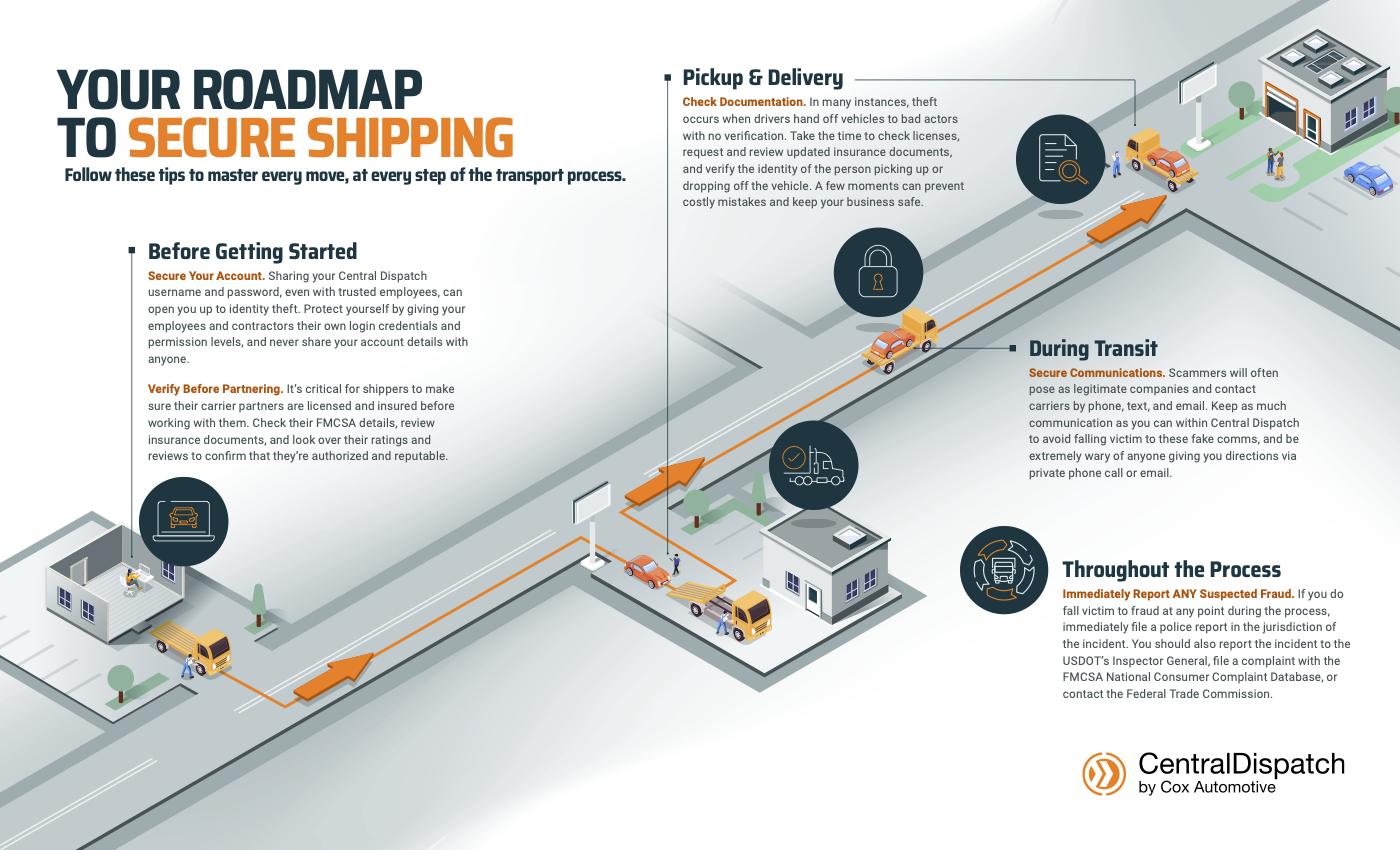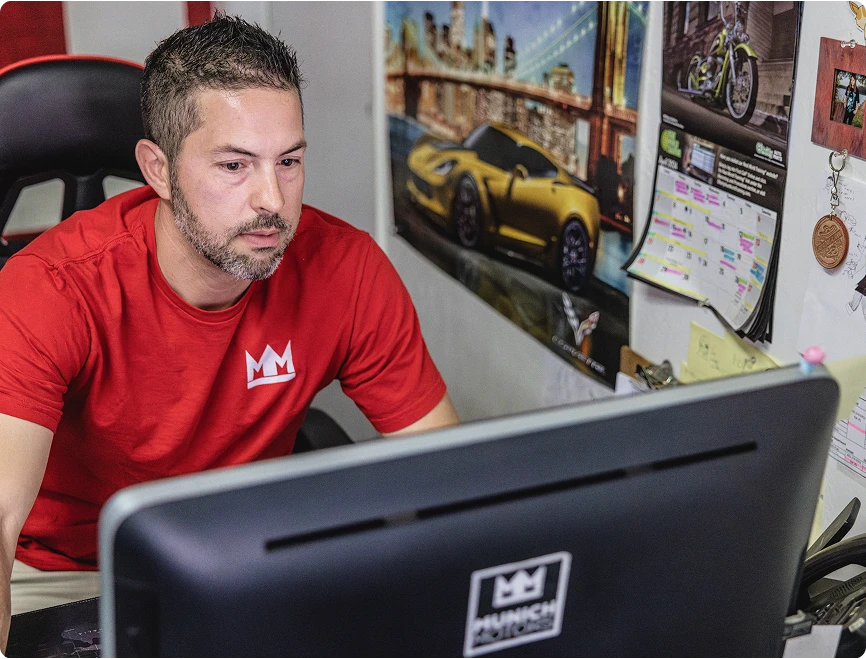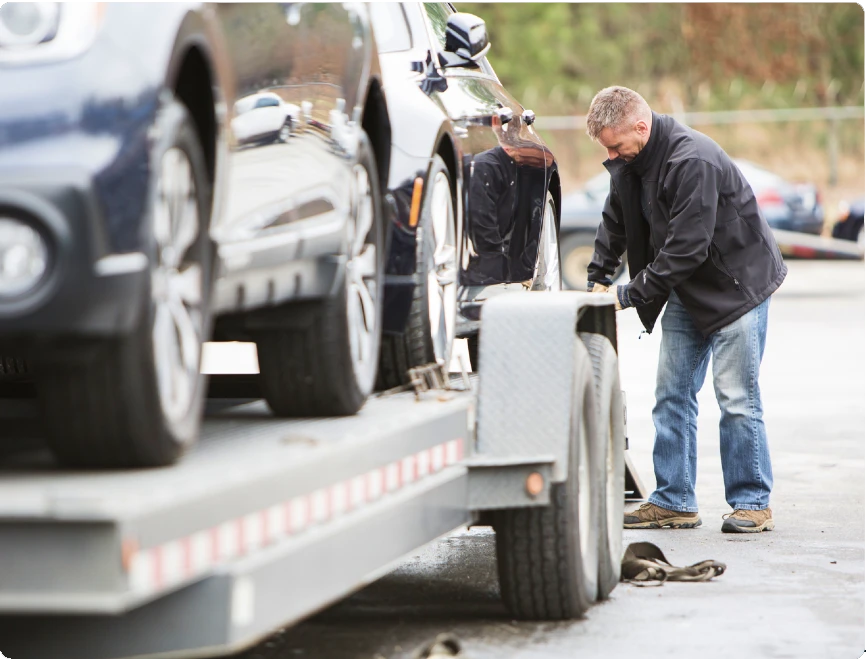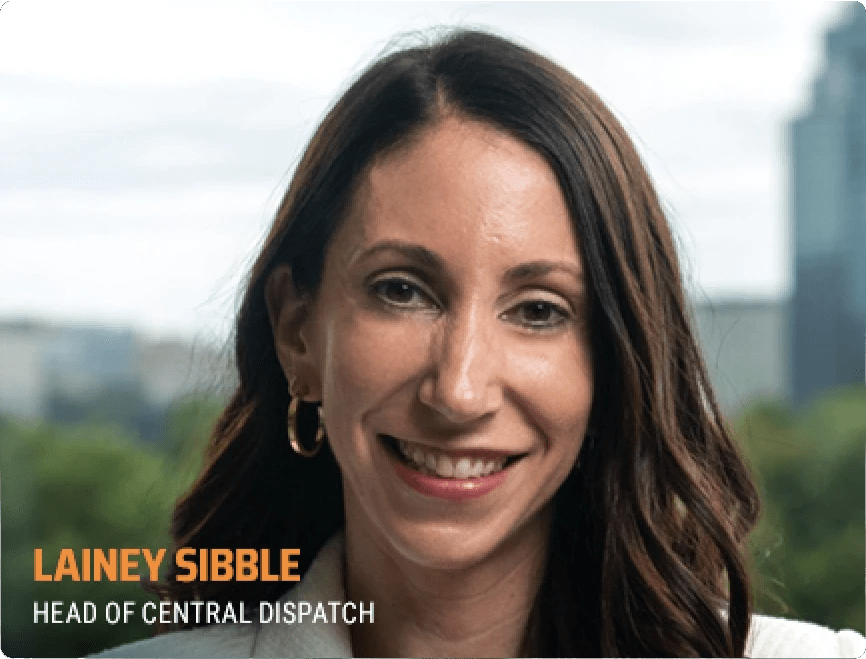Master Every Move With Confidence
Transportation fraud is on the rise. We’ll help you stay safe.
With new platform enhancements, tools, and a dedicated Marketplace Integrity Team, Central Dispatch has everything you need to protect your business and stay in control. Explore this page for tips and best practices that can help you stay ahead and make every move with confidence.

The impact of transportation fraud
$35B
impact across
industry
1,500%
Increase in theft
since 2022
$200K
Average value per
cargo theft

What it looks like
A bad actor poses as a real logistics company to steal vehicles or carry out a scam. They may use a legitimate company’s credentials, or create an account using fake documents. They will often offer unusually low prices for scam jobs, or contact carriers and request that they re-route someone else’s vehicle to them.
What we’re doing
We are constantly evolving our vetting process alongside the changing market landscape to ensure only legitimate companies gain access to our marketplace. We’re also working to take down fake websites that lure carriers into entering their FMCSA details where they are stolen by scammers.
What you can do
Set up User Management to give each person in your organization their own log in, and avoid the risks of sharing account details. You should also use strong passwords on each account, and be wary of phishing scams attempting to steal your account credentials or FMCSA details.

What it looks like
A fake carrier will accept a load, then re-dispatch it to a real carrier without telling the shipper. So when the real carrier completes the delivery, the fake company can collect the payment. Re-posted loads and conflicting details on bills of landing are signs of double brokering.
What we’re doing
Along with monitoring for high-risk activity and deactivating fraudulent accounts, we’ve provided shippers with a new dispatch experience that provides stronger visibility into carrier credentials, and can help them identify double brokering scams.
What you can do
Ensure you have a dispatch sheet with a named driver and company before releasing vehicles. At the pick-up location, always check if the delivery truck has a valid MC number that matches the one listed on the dispatch sheet. You should check their driver’s licenses, and make confirmation calls with all parties. See our full safety checklist for more tips.

What it looks like
A bad actor contacts a carrier and attempts to divert drivers to a new drop-off location where they steal the vehicle. These scammers will typically pose as the shipper through text, email, or phone call, and will often offer the carrier extra money for the inconvenience.
What we’re doing
We’re partnering with Cox Automotive cybersecurity to investigate reported cases of theft and take action when necessary. We’re monitoring and taking down phishing sites used to access FMCSA credentials and transportation platform accounts weekly.
What you can do
Never trust any links received via email and/or text from third parties directing you to Central Dispatch or asking you to log-in or provide account information
Carriers. Verify that any text, call, or email sent to you is from the assigned shipper before following new delivery instructions, and be wary of unusually high offers. Take extra precautions if anyone offers money to re-route you mid – delivery. Protect your business with these prevention tips.
Shippers. Vet all your partners’ credentials before doing business with them, including their FMCSA details, insurance, and Transactional Ratings. Use Real-Time Tracking tools to see where your vehicles are throughout the transport process.

Everyone has a role in combating fraud
We’re all in this together. Get additional tips for making transportation safer as a shipper or carrier, and read more about our role.
- Require the carrier to add a named driver to the dispatch and share real-time tracking info.
- When assigning to a carrier, check their FMCSA details, insurance, and ratings before dispatching.
- Look out for phishing scams, and use one platform for a digital record and to safeguard your identity.
- Always have a dispatch sheet with a named driver, and verify the delivery truck’s MC numbers.
- Establish a release protocol with your pick-up agents, and trust your instincts.

- Assign a driver to each load, so the pick-up agent can easily verify their identity.
- Require shippers to make any drop-off location or route change requests through the digital platform.
- Secure your account by using strong passwords and multi-factor authentication.
- Take precaution of anyone offering you extra money to re-route vehicles. This is likely a scam.

- Partner with FMCSA to lobby Congress for stronger protections against vehicle theft.
- Investigate all reports of fraud and work with authorities to recover stolen vehicles.
- Enforce strong platform gatekeeping and continually strengthen the on-boarding process.
- Proactively monitor for high-risk behavior and take action when necessary.
- Continually introduce security improvements, enhancements, tools to prevent fraud.

